Your questions requires a bit more specification as to the technology behind the touch detection.
Touch detection techniques vs. Materials
Typically, plastic surfaces are resistive touch panels placed in-front of glass or plastic LCD screens. They have to be made from plastic (as opposed to glass) because they detect touch by deforming. The user's finger bends the plastic film where it touches and this presses an upper film into one beneath it completing a circuit (4-wire design) or enables a complex triangulation of the deformation location (5-wire design). This style of screen is used in many industrial applications because it works when you have gloves on (factories, hospitals, etc).
Typically, glass touchscreens use a technique called capacitive touch detection. They emit a constant quasi-static electric field and look for changes to that field caused by the presence of conductive (charge storing) materials nearby (like your finger).
Yes. You can make both.
It is possible to make capacitive screens on plastic substrates. There are many applications that do, but it's not done on CellPhones (and virtually all consumer applications) because for the higher cost of the capacitive circuitry and the relatively minimal cost to go from plastic to glass, the outcome is much nicer for the finished product.
You can make plastic capacitive touch screens as accurate as glass ones if you use the right substrates. Glass works well because it is optically clear and doesn't electrically polarize easily, this can hold true for certain plastics as well. This is, however, not true of the typical commercial plastic (PE, PET, PTFE, PVC, etc) -- you need additives or alternate chemistry.
 Source: Geoff Walker, Sr. Engineer, Touch Tech. @ Intel; Lecture slides from FPD China 2013
Source: Geoff Walker, Sr. Engineer, Touch Tech. @ Intel; Lecture slides from FPD China 2013
So in short...
Plastic touch panels appear less sensitive because the ones you commonly encounter are a different type of technology (resistive touch panel -- RTP) that requires physically deforming a film, measuring the location of the deformation, and tracking one finger at a time.
Glass panels appear more sensitive because capacitive sensing responds to the mere presence of your finger and does not even require that you touch the screen.
